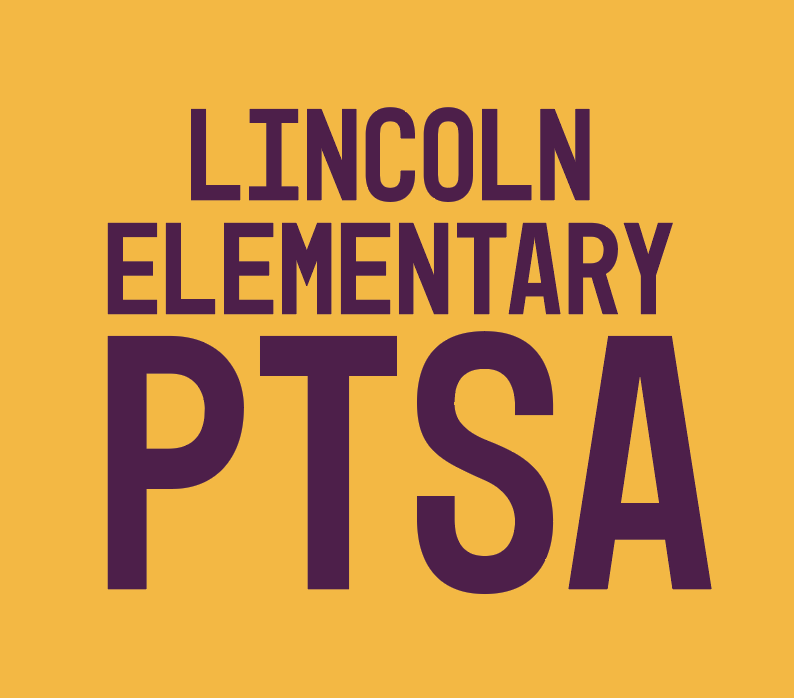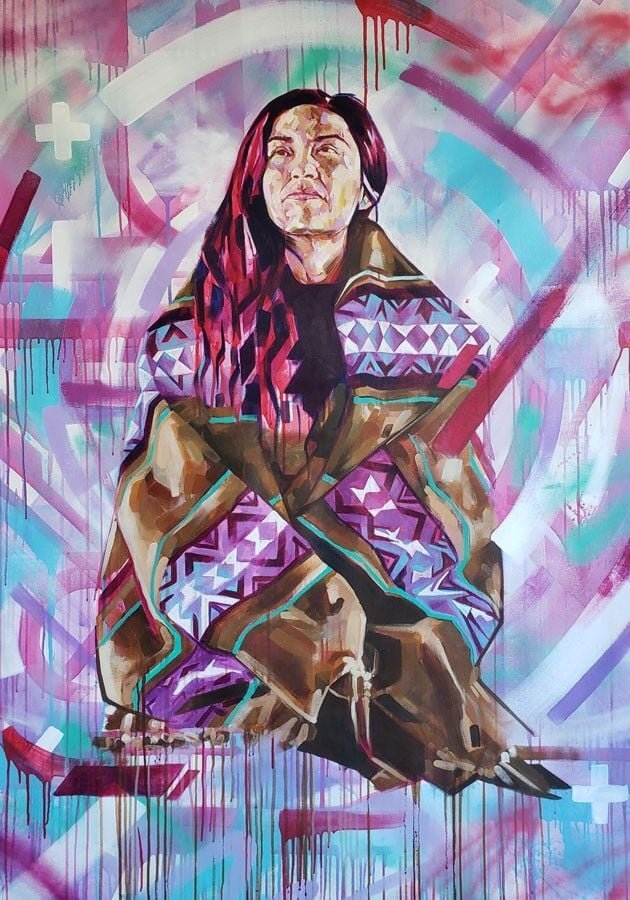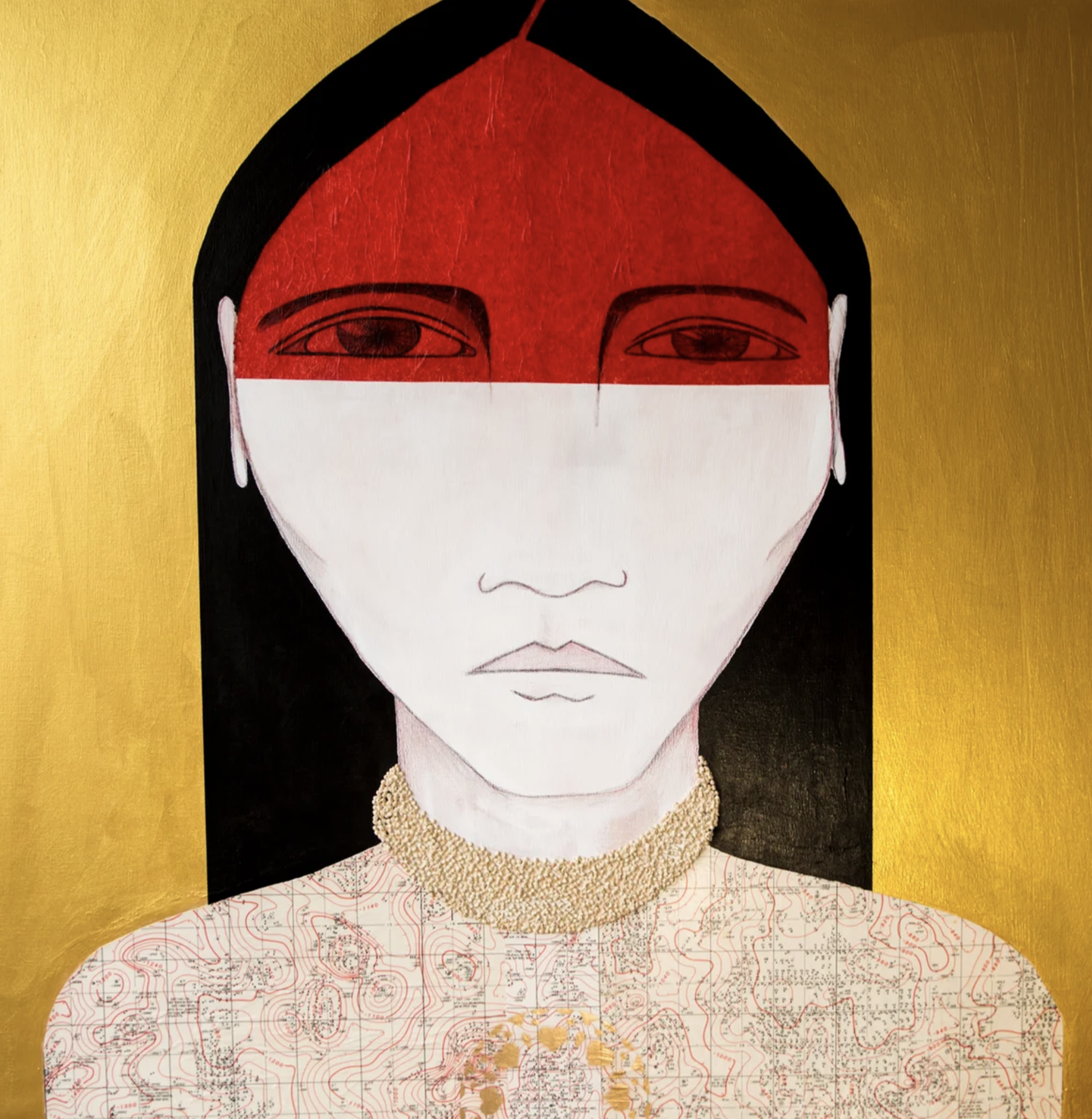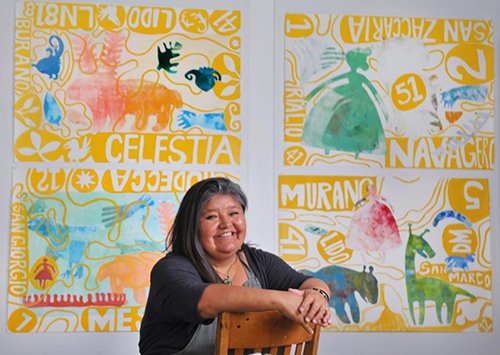Celebrating Native American Heritage Month
November is Native American Heritage Month, and with the Thanksgiving holiday around the corner, is an excellent opportunity for your family to learn more about the Native tribes and peoples who lived and still live locally in Colorado and to dispel myths about the Thanksgiving Holiday.
Artwork by JayCee Beyale.
Lincoln Elementary sits on the traditional territories and ancestral homelands of the Núu-agha-tʉvʉ-pʉ̱ (Ute), Tséstho’e (Cheyenne), and Očhéthi Šakówiŋ (Sioux) Nations. Additionally, we acknowledge the 48 contemporary tribal nations historically tied to the lands that comprise what is now called Colorado. Below are a few stories about each tribe, as well as additional resources to help you learn more, to connect with local native organizations, and create your own traditions.
“November is Native American Heritage month, and a good time to honor the legacy of our ancestors, but every day we should stop to think about our country’s beginning and that the United States would not exist if not for a great deal of sacrifice, blood, and tears by Indian Tribes across the country.”
Learning More
As much as possible, learn about Native cultures straight from the source, by researching local tribes and visiting their museums, cultural centers, and events. The First Nations organization challenges everyone to go beyond simply celebrating this November:
Talking About Thanksgiving
Drafted by Star Yellowfish, Director of Native American Student Services (NASS) for Oklahoma City Public Schools, this guide is great way for families to share and learn about the Thanksgiving Holiday as told by the Indigenous people of the United States, complete with activities and more.
Online Resources
Native Land is a tool that maps out Indigenous territories, treaties, and languages. They make it possible for you to search any address and learn more about the tribes, Nations, and people who have history on that land. They also provide additional teaching resources.
Indian & Cowboy is an independent Indigenous media company that creates, produces & publishes Indigenous media projects across multiple platforms on the internet & for broadcast media.
The Museum of Indian Arts + Culture and the Smithsonian’s National Museum of the American Indian offers online exhibitions you can visit.
The National Park Service’s Native American Heritage Month website enables you to discover important people and stories at U.S. parks, memorials, and historic sites that honor Native Americans, Alaska Natives, and Native Hawaiians.
Ute: Ute Indian Tribe, Southern Ute Indian Tribe website (beautiful storytelling)
Cheyenne: Cheyenne Nation, Cheyenne and Arapaho Tribes
Sioux: Oglala Lakota Nation, Standing Rock Sioux Tribe
Local Resources
The Ute Indian Museum welcomes visitors with a stunning building and exhibition connecting the past with contemporary Ute life and culture.
At the Plains Conservation Center, see how two contrasting cultures converged on the Colorado prairie by examining the re-created tepee camps of the nomadic Cheyenne tribe and visiting Wells Crossing, a 1887 pioneer outpost.
Crow Canyon Archaeological Center invites citizen scientists of all ages to contribute to a unique and important mission: empowering present and future generations by making the human past accessible and relevant through archaeological research, experiential education, and American Indian knowledge.
The Denver Indian Center was founded in 1983 as an urban cultural gathering center for the Native community in Denver.
Books & Reading
There are many wonderful children’s books by or about Native Americans, Alaska Natives, or Native Hawaiians. Social Justice Books breaks down categories for early childhood, upper elementary, young adult and adult readers on their list.
A few favorites include The Magic of Spider Woman by Lois Duncan and Shonto Begay, The Fire Bringer: a Paiute Indian Legend by Margaret Hodges, Searching for Chipeta: The Story of a Ute and Her People by Vickie Leigh Krudwig, Coyote Steals Fire: a Shoshone Tale by The Northwestern Band of Shoshoni Nation of Utah, How the Stars Fell into the Sky: a Navajo Legend by Jerrie Oughton, and The Night the Grandfathers Danced by Linda Raczek.
Connecting With the Land
In the words of Native Land, “Land is something sacred to all of us, whether we consciously appreciate it or not — it is the space upon which we play, live, eat, find love, and experience life. The land is ever-changing and ever-shifting, giving us — and other creatures and beings on the earth — an infinite number of gifts and lessons.”
Indigenous peoples have a special relationship with the natural world. This month, find ways for your child to deepen their own love for the land. Ideas include:
Take a walk in the woods
Go stargazing
Clean up a neighborhood park
Take time to appreciate and give back to Mother Earth
Plan a garden for next spring (read about corns, beans, and squash) or lend a hand in a community garden.
Go snowshoeing
Play basketball (which has Indigenous roots), or support a Native-led physical fitness nonprofit
Food + In the Kitchen
Tocabe is currently the only American Indian owned and operated restaurant in Metro Denver specializing in Native American cuisine. Their co-owners, Matt Chandra and Ben Jacobs, are members of the Osage Nation and were inspired to open Tocabe by Grayhorse: An American Indian Eatery, which was established in 1989 by the Jacobs family.
Our family has started integrating Native American foods into our Thanksgiving dinner. The Sioux Chef by Sean Sherman and Beth Dooley is a beautiful and informative resource for recipes and the history behind the foods. First Nations Development Institute also shares popular dishes like fry bread and Wojapi, and Powwows.com, which lists 25 favorites.
In addition, the feature film GATHER tells the story about Indian resilience and the renaissance of Native food systems.
Crafts + Art
If you have younger kids, make a respectful Native craft. This is most meaningful when you connect it to tribes here in Denver. One spot to start is at the Smithsonian’s National Museum of the American Indian, which presents video tutorials for a sunflower bracelet, summer strawberry, and cornhusk dragonfly.
Also, check out the art of local and regional artists, such as JayCee Beyale, Addie Roanhorse, and Melanie Yazzie.
If you have additional information or resources we can include, please email communications@mylincolnptsa.org.





